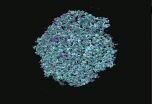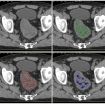INFORMATION:
The National Institutes of Health supported this work.
Altered milk protein can deliver AIDS drug to infants
2014-11-11
(Press-News.org) A novel method of altering a protein in milk to bind with an antiretroviral drug promises to greatly improve treatment for infants and young children suffering from HIV/AIDS, according to a researcher in Penn State's College of Agricultural Sciences.
That's critical because an estimated 3.4 million children are living with HIV/AIDS, the World Health Organization reports, and nine out of 10 of them live in resource-limited countries in sub-Saharan Africa, where effective antiretroviral treatments still are not widely accessible or available. International medical experts believe less than a third of affected children worldwide receive an antiretroviral drug.
Complicating treatment is that most antiretroviral drugs are not well tolerated by very young children. One of the most commonly prescribed antiretroviral drugs for treating and preventing HIV infection, Ritonavir, has undesirable side effects and important oral-delivery problems. Its physicochemical properties challenge its administration to infants, explained Federico Harte, associate professor of food science.
"Ritonavir has a high hydrophobicity and low solubility in water, which lead to a low dissolution rate in the gastrointestinal fluid and, hence, to insufficient bioavailability. The liquid formulation used to treat infants over one month of age contains 43 percent ethanol and has an awful flavor that has been described as bitter-metallic, medicinal, astringent, sour and burning," he said.
"Moreover, when coming into contact with the stomach mucosa, Ritonavir causes nausea, vomiting and diarrhea. Therefore, we need to develop alternative pediatric formulations of Ritonavir and overcome its poor water solubility to improve its oral administration to infants and children."
To solve that problem, Harte looked to a group of proteins in cow's milk celled caseins. Casein proteins form spherical aggregates called casein micelles, which are responsible, incidentally, for the white color of milk. The casein micelles in mammals' milk are natural delivery systems for amino acids and calcium from mother to young, and Harte reasoned, might deliver Ritonavir molecules as well.
"I have been working with bovine casein micelles for a few years now, and we have investigated the structure and functionality of these proteins," he said. "What we found is these micelles are able to carry molecules that have very little solubility in water, that have low molecular weight and that are very hydrophobic -- such as Ritonavir."
Significantly, Harte discovered in his research -- recently published online in the Journal of Pharmaceutical Research -- that subjecting milk to ultrahigh-pressure homogenization enhances the binding properties of the casein micelles. In previous studies, he learned that casein micelles could be bound to triclosan -- an antimicrobial used in deodorants -- and vitamin D, which is added regularly to skim milk.
Normal milk is homogenized at 10 to 15 megapascals, he pointed out. Milk in this research was homogenized at between 400 and 500 megapascals, disassociating the casein micelles and improving the protein's binding qualities to attach to drug molecules.
"As a result of this enhanced binding of molecules, we believe a milk powder containing Ritonavir can be used as baby formula, providing a transport system for a drug that is not very soluble in water. Right now we are running tests, and we are in the final stages of an experiment in which we gave three different formulations to piglets," Harte said.
"We are taking blood serum samples every three hours to study the kinetics of the drug in the piglets," he said. "The hope is that -- and we don't have the data yet -- we find that the Ritonavir is being adequately delivered by the protein in milk. So if that works, I think we are pretty close to having a formulation that can be used with hydrophobic drugs."
Harte noted that with his proposal for research funding he included a letter from a pediatrician at St. Jude Children's Research Hospital describing the challenge of orally administering Ritonavir to infants and young children.
"She has been treating patients with AIDS, and the awful flavor and ethanol content of Ritonavir were big issues for her," he said. "I am hopeful that this may lead to an application that works against AIDS. We have not done any clinical trials yet, so we will need to get data from those trials to say for sure."
ELSE PRESS RELEASES FROM THIS DATE:
Mapping the spread of diarrhea bacteria a major step towards new vaccine
2014-11-11
Enterotoxigenic Escherichia coli (ETEC) bacteria are responsible each year for around 400 million cases of diarrhoea and 400,000 deaths in the world's low- and middle-income countries. Children under the age of five are most affected.
ETEC bacteria also cause diarrhoea in nearly one in two travellers to these areas.
Major breakthrough
Researchers at the University of Gothenburg's Sahlgrenska Academy are world leaders in research into ETEC and have now made a major breakthrough in collaboration with colleagues from the Wellcome Trust Sanger Institute in the UK, Karolinska ...
Enriched environments hold promise for brain injury patients
2014-11-11
As football players are learning, a violent blow to the head has the potential to cause mild to severe traumatic brain injury -- physical damage to the brain that can be debilitating, even fatal. The long-term effects run the gamut of human functioning, from trouble communicating to extensive cognitive and behavioral deterioration. To date, there is no effective medical or cognitive treatment for patients with traumatic brain injuries.
But a new study from Tel Aviv University researchers points to an "enriched environment" -- specially enhanced surroundings -- as a promising ...
Tumor-analysis technology enables speedier treatment decisions for bowel-cancer patients
2014-11-11
Technology developed at the University of Sussex helps hospitals make earlier and more accurate treatment decisions and survival assessments for patients with bowel cancer.
Bowel cancer kills more than 16,000 people a year in the UK, making it the nation's second-most common cause of cancer death (after lung cancer).
A novel medical-imaging technology, TexRAD, which analyses the texture of tumours, has been shown in trials to enable early diagnosis of those bowel-cancer patients not responding to the standard cancer therapy better than other available tumour markers. ...
Queensland research helping reduce road fatalities in China
2014-11-11
Changes to China's drink driving laws are catching the community off guard with more than 70 per cent of people unaware of the blood alcohol limits that could see them face criminal charges, according to new Queensland University of Technology (QUT) research conducted in two Chinese cities.
QUT's Centre for Accident Research & Road Safety - Queensland (CARRS-Q) has partnered with organisations in China to promote road safety and reduce fatalities and injuries, as alcohol-related driving offences are being brought into sharper focus because of the country's rapid motorisation ...
IU biologists collaborate to refine climate change modeling tools
2014-11-11
A new climate change modeling tool developed by scientists at Indiana University, Princeton University and the National Oceanographic and Atmospheric Administration finds that carbon dioxide removal from the atmosphere owing to greater plant growth from rising CO2 levels will be partially offset by changes in the activity of soil microbes that derive their energy from plant root growth.
Soils hold more carbon than all of the earth's plant biomass and atmosphere combined. The new work published by Benjamin N. Sulman, a postdoctoral researcher in the lab of co-author and ...
IU researcher publishes 'landmark' results for curing hepatitis C in transplant patients
2014-11-11
INDIANAPOLIS -- A new treatment regimen for hepatitis C, the most common cause of liver cancer and transplantation, has produced results that will transform treatment protocols for transplant patients, according to research published online today in the New England Journal of Medicine.
The investigational three-drug regimen, which produced hepatitis C cure rates of 97 percent, is an oral interferon-free therapy. Previously, the typical treatment for hepatitis C after a liver transplant was an interferon-based therapy, usually given for 48 weeks. It had a much lower response ...
Typhoid gene unravelled
2014-11-11
Lead researcher, Dr Sarah Dunstan from the Nossal Institute of Global Health at the University of Melbourne said the study is the first large-scale, unbiased search for human genes that affect a person's risk of typhoid.
Enteric fever, or typhoid fever as it more commonly known, is a considerable health burden to lower-income countries.
This finding is important because this natural resistance represents one of the largest human gene effects on an infectious disease.
"We screened the human genome to look for genes associated with susceptibility to, or resistance ...
Weeds yet to reach their full potential as invaders after centuries of change
2014-11-11
Weeds in the UK are still evolving hundreds of years after their introduction and are unlikely to have yet reached their full potential as invaders, UNSW Australia scientists have discovered.
The study is the first to have tracked the physical evolution of introduced plant species from the beginning of their invasion to the present day, and was made possible by the centuries-old British tradition of storing plant specimens in herbaria.
The research team, led by Habacuc Flores-Moreno, looked at three common weeds - Oxford ragwort, winter speedwell and a willow herb - which ...
Controversial medication has benefits for breastfeeding
2014-11-11
A controversial medication used by breastfeeding women should not be restricted because of the benefits it offers mothers and their babies, according to researchers at the University of Adelaide.
The medication domperidone has recently been the subject of warnings from the European Medicines Agency based on research that there is a link between the medication and fatal heart conditions.
Domperidone has been banned in the United States for years because of fatal cardiac arrhythmias among cancer patients who had been prescribed the drug to prevent nausea and vomiting.
However, ...
Creating bright X-ray pulses in the laser lab
2014-11-11
This news release is available in German. X-rays are widely used in medicine and in materials science. To take a picture of a broken bone, it is enough to create a continuous flux of X-ray photons, but in order to study time-dependent phenomena on very short timescales, short X-ray pulses are required. One possibility to create short hard X-ray pulses is hitting a metal target with laser pulses. The laser rips electrons out of the atoms and makes them emit X-ray radiation. Electrical engineers at the Vienna University of Technology (TU Wien) together with researchers ...







